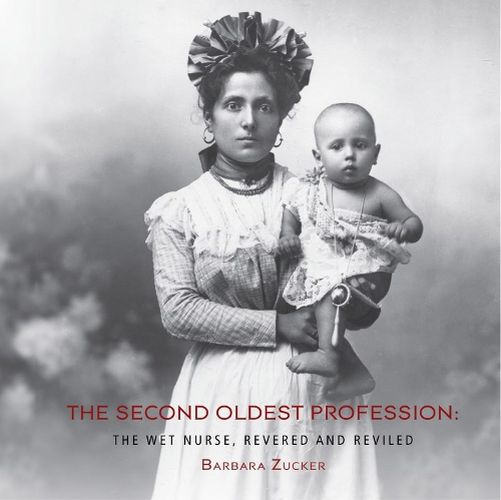Readings Newsletter
Become a Readings Member to make your shopping experience even easier.
Sign in or sign up for free!
You’re not far away from qualifying for FREE standard shipping within Australia
You’ve qualified for FREE standard shipping within Australia
The cart is loading…






An illustrated exploration of an age-old occupation, at once life-giving and freighted with contradictory ideas about women and their bodies. The wet nurse-a woman hired to breastfeed a child not her own-is indeed attested far back in history; in fact, archaeologists have discovered the tomb of Tutankhamen's wet nurse. In modern Europe and the United States, wet nursing persisted into the early twentieth century, when bottles and formula rendered it obsolete. At one end of the social scale, wealthy families hired wet nurses to spare mothers the necessity of nursing; at the other, foundling babies were fed by wet nurses employed by orphanages. In this book, conceived as both a social history and a feminist act of reparation, artist Barbara Zucker uncovers the forgotten-perhaps deliberately buried-occupation of wet nursing. She ranges across eras and cultures, revealing the practices surrounding wet nursing and the social attitudes toward the women who worked as wet nurses, almost always out of financial necessity. She investigates such surprising topics as traditional tests of the quality of breast milk (ranging from straightforward tasting to esoteric, almost alchemical rituals) and interspecies nursing (with the goat's teat the most common stand-in for the human breast). Zucker's lively text is abundantly illustrated with paintings, prints, and photographs she has teased from the archives, as well as her own arresting drawings and sculptures inspired by the topic. The Second Oldest Profession will be essential and provocative reading for anyone interested in women's history. AUTHOR: Barbara Zucker is professor emerita of art at the University of Vermont and a founder of the A.I.R. Gallery, the first women's cooperative gallery in the United States. SELLING POINTS: . The first-ever popular history of the wet nurse-a woman hired to breastfeed a child not her own-spanning from ancient Egypt to the early twentieth century . Abundantly illustrated with surprising artworks and photographs from around the world, as well as the author's own drawings and sculptures inspired by the subject . Author Barbara Zucker, a noted feminist artist, conceived this book as both a social history and a feminist act of reparation, to bring the hidden story of the wet nurse to light. . Accessible and provocative, this is a book aimed at a broad audience-anyone who is interested in women's social roles and the once-universal experience of breastfeeding.
$9.00 standard shipping within Australia
FREE standard shipping within Australia for orders over $100.00
Express & International shipping calculated at checkout
An illustrated exploration of an age-old occupation, at once life-giving and freighted with contradictory ideas about women and their bodies. The wet nurse-a woman hired to breastfeed a child not her own-is indeed attested far back in history; in fact, archaeologists have discovered the tomb of Tutankhamen's wet nurse. In modern Europe and the United States, wet nursing persisted into the early twentieth century, when bottles and formula rendered it obsolete. At one end of the social scale, wealthy families hired wet nurses to spare mothers the necessity of nursing; at the other, foundling babies were fed by wet nurses employed by orphanages. In this book, conceived as both a social history and a feminist act of reparation, artist Barbara Zucker uncovers the forgotten-perhaps deliberately buried-occupation of wet nursing. She ranges across eras and cultures, revealing the practices surrounding wet nursing and the social attitudes toward the women who worked as wet nurses, almost always out of financial necessity. She investigates such surprising topics as traditional tests of the quality of breast milk (ranging from straightforward tasting to esoteric, almost alchemical rituals) and interspecies nursing (with the goat's teat the most common stand-in for the human breast). Zucker's lively text is abundantly illustrated with paintings, prints, and photographs she has teased from the archives, as well as her own arresting drawings and sculptures inspired by the topic. The Second Oldest Profession will be essential and provocative reading for anyone interested in women's history. AUTHOR: Barbara Zucker is professor emerita of art at the University of Vermont and a founder of the A.I.R. Gallery, the first women's cooperative gallery in the United States. SELLING POINTS: . The first-ever popular history of the wet nurse-a woman hired to breastfeed a child not her own-spanning from ancient Egypt to the early twentieth century . Abundantly illustrated with surprising artworks and photographs from around the world, as well as the author's own drawings and sculptures inspired by the subject . Author Barbara Zucker, a noted feminist artist, conceived this book as both a social history and a feminist act of reparation, to bring the hidden story of the wet nurse to light. . Accessible and provocative, this is a book aimed at a broad audience-anyone who is interested in women's social roles and the once-universal experience of breastfeeding.